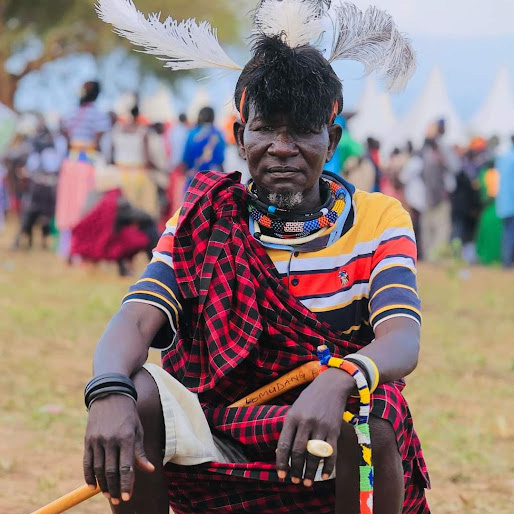The best way to imagine the Great Migration (Wildebeest Migration) is if you close your eyes and picture dust lifting off the Serengeti, the vibrating hush that rolls across an open plain moment before half a million hooves thunder past.
That heartbeat you feel? It’s not yours alone—it’s two million wildebeest, zebra, and gazelle pulsing through Tanzania and Kenya on an endless, clockwise pilgrimage for fresh grass and water.
This isn’t a single event; it’s a living river of life and risk, of newborn calves and stalking predators, of river crossings that feel like coin-flips between survival and surrender.
Greener pasture and clean drinking water is the primary reason. When the short-grass plains of southern Serengeti turn dry and brown under the sun, instinct drags the herds northwest toward distant storm clouds in search for better pasture.
Wildebeest follow scent and sound: the sweetness of new shoots, the rumble of distant thunder, and the collective memory etched in every sinew.
They aren’t always alone, Zebra march beside them, clipping taller stems; gazelle nip the flower heads. Together they move in a path that keeps predators belly full, soils fertilized, and grasslands reborn.
Precisely put, Migration is the ecosystem’s annual reboot—an ancient agreement between sky, soil, and muscle.
In Ndutu, Southern Serengeti between January and March, the landscape turns lush after the holiday rains. Calves are born in the daylight, and cheetahs dart through the chaos of new life. You’ll hear the soft bleats over your morning coffee as mobile camps settle among acacias. If you’re hoping to witness the wildebeest calving, this is the time and place.
April brings you to Moru Kopjes and Central Serengeti, where lions lounge on warm rocks, watching the wildebeest below. Rainstorms light up the skies in silver, turning every sighting into a cinematic masterpiece.
May and June lead the herds to the Western Corridor and the Grumeti River. The thick forest canopy and old crocodiles lurking in the shallows make every crossing tense. It’s a spectacle of courage and chance as herds leap into the unknown.
From July to October, the drama shifts to Kogatende and the Lamai Triangle in Northern Serengeti. Rolling hills hide countless Mara River crossings. Wildebeest gather and hesitate at the banks before one brave soul makes the leap, and the rest follow in thunder.
In August and September, the action spills into Kenya’s Masai Mara Triangle. The grass is tall, predators lie in wait, and herds split and test every bend. Game viewing here feels intimate, with fewer vehicles and more wild moments.
Come November, the herds move through Seronera and Lobo. Storms call from the south, and the wildebeest begin their return. Fewer tourists, golden light, and a quiet sense of closure fill the air.
JANUARY – First Heartbeat Begins
Ndutu’s plains glow in neon green in this month, and heavy-bellied wildebeests spread out like a living quilt. At sunrise, the first calves arrive, wobbly but determined. Jackals lurk nearby, but the sheer number of newborns overwhelm the hunters. For a short while, peace reigns in the grasslands, broken only by distant thunder.
FEBRUARY – The Calving Crescendo
The birthing reaches its peak in February—around 8,000 calves are born every single day. The air smells like milk and damp earth. Vultures circle above. Lions form small, focused groups, targeting stray calves. But the herd holds strong, forming a living shield to protect their young ones.
MARCH – First Rumblings of Departure
During this month, the rains ease and the puddles vanish. Calves, now stronger, begin trekking long distances. Dust trails start to rise as the first groups peel away toward the north. Predators sense the end of easy hunting as the nursery slowly empties.
APRIL – The Rut in a World of Thunderheads
In April, rainstorms drench the Central Serengeti, and the bulls begin to fight for dominance. They crash horns beneath grey skies while Moru’s granite outcrops glow under flashes of lightning. It’s a month of loud grunts, wet earth, and wild energy.
MAY – Long Columns to the Western Corridor
In May is when the herds stretch endlessly, heading toward the Grumeti River. Zebras lead, wildebeests follow, and gazelles finish the sweep. At night, their moans and low calls hum through the savannah like a lullaby, echoing through your tent.
JUNE – Crocodile Roulette on the Grumeti
The Grumeti’s waters drop in June, revealing narrow crossings. Crocodiles—some older than local guides—wait patiently. The tension builds until the first wildebeest jumps. Some make it. Others don’t. And just like that, life moves on.
JULY – Second Heartbeat Quickens
In the month of July, cool winds guide the migration into Northern Serengeti. The Mara River presents the ultimate gamble. Wildebeest bunch together at the riverbank, nervous and tight. Then one jumps—and the flood begins. The sky fills with vultures, the ground trembles, and even the engines go quiet.
AUGUST – Peak Drama on the Mara
Every bend in the river could mean action in the month is August. Herds test the water multiple times a day. Lions, hyenas, and crocs take their places. The drama peaks, cameras click, and dust turns golden in the setting sun.
SEPTEMBER – The Mara Feast
With the grass still rich, the herds graze calmly in September. Calves are faster now, and cheetahs look for tired stragglers. The evenings glow soft amber, and the land seems to breathe between storms, holding on to the last days of the feast.
OCTOBER – Decision in the Wind
In October, rainfall begins to stir in the south. Some wildebeest raise their heads and follow the scent. Others wait. The migration splits—some stay in Kenya while others begin the return journey, leaving behind quiet riverbanks and fading tracks.
NOVEMBER – The Long Retreat
During the month of November, Rains hit Eastern Serengeti, and the herds push south. The trail winds through Loliondo and Lobo, turning into red mud under their feet. Lightning paints the sky while long, single-file columns march silently through the night.
DECEMBER – Homecoming to Calving Grounds
And finally in December, thunder cracks above Ndutu again, and the grass returns. Pregnant cows arrive first, eager to feed on the mineral-rich greens. By mid-month, the cycle is complete. New life stirs, predators sharpen their gaze, and the plains come alive with tiny wobbly steps. The rhythm begins again.
Each twist in the route tells its own story. Follow the map and trace the journey—a loop written in hooves and instinct.
From late January through February, the plains explode with new life. Up to 8,000 calves are born daily. It’s chaotic, loud, and heart-wrenchingly tender. Umbilical cords dangle as legs wobble. Hyenas hover. It’s a time where survival hinges on safety in numbers. But for those behind the lens, it’s a moment of intimacy—green backdrops, milk-smeared noses, and life rising from dust.
When is the absolute best time to see a dramatic river crossing?
Head to Northern Serengeti or Masai Mara between late July and early September. Rain dictates crossings, so stay at least four nights near the river for the best chance.
How many animals migrate?
About 1.5 million wildebeest, 200,000 zebras, and 350,000 gazelles move together, with predators following in their wake.
Does the migration ever stop?
It’s constant. Even if you miss one highlight, you’ll likely catch another—be it calving, rutting, or the great journey south.
Why do zebras tag along?
Zebras eat tougher grass, clearing a path for wildebeest to graze the soft stuff underneath. In return, they benefit from the wildebeest’s sharp eyes and numbers.
Can I witness the migration from a hot-air balloon?
Yes. In both central and northern Serengeti, you can lift off at dawn and float silently above the herds—a bird’s eye view like no other.
How dangerous are river crossings for the animals?
Roughly 1% of the herd doesn’t make it—between crocodiles, exhaustion, and injury. But evolution has made the risk worth it for fresh grass and survival.
Is it worth visiting outside peak months?
Absolutely. April brings dramatic skies, June buzzes with rutting energy, and November’s return offers striking visuals with fewer tourists.
What gear should photographers pack?
A fast zoom lens (100-400mm), a beanbag for vehicle support, loads of memory, dust-proof cases, and a wide lens for those all-surrounding herd moments.
Give Us a call or arrange a meeting with one of our Travel Consultants to discuss more your Tanzania Safari Adventure



Made in Arusha - Tanzania :)
Copyright © 2026 Serengeti Mara Experts LLC All Rights Reserved